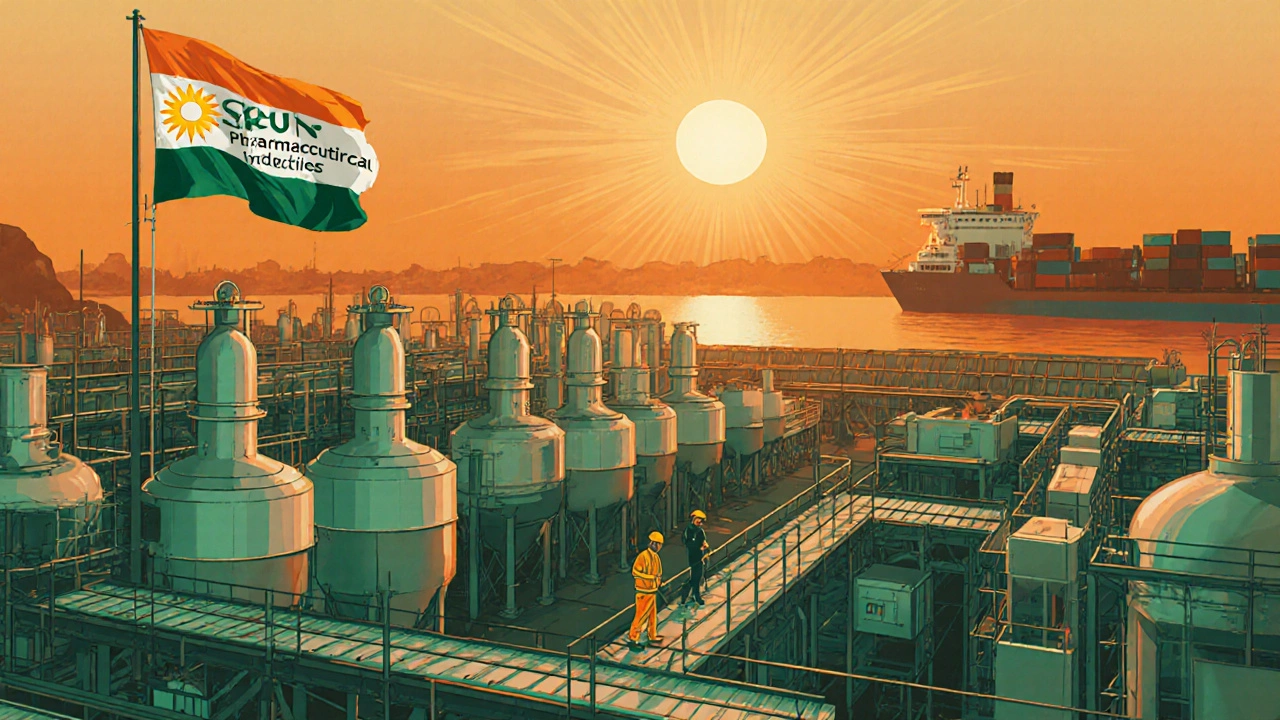Richest Pharmaceutical Company 2025 - Who Leads the Pharma Industry?

Pharmaceutical Company Revenue Comparison Tool
Compare Top Pharma Companies
Select companies to compare their revenue figures and key financial metrics from 2025 data.
Company Comparison Results
Select companies to see comparison data
When you hear the phrase richest pharmaceutical company, the first thing that comes to mind is massive revenue, a towering market capitalization, and a global footprint that few can match. In 2025 the pharma landscape is dominated by a handful of giants, but the real question for many Indian readers is: which Indian firm sits at the top of that list? This article breaks down the numbers, explains the metrics that matter, and gives you a clear picture of who truly owns the crown - both worldwide and in India.
What Does "Richest" Really Mean?
In the pharma world two financial gauges are usually used to decide who’s on top:
- Revenue - the total sales a company generated in a fiscal year.
- Market Capitalization - the value of all outstanding shares, reflecting how investors price the business.
Revenue tells you how much money the company actually pulled in from its products, while market cap shows the market’s belief in future growth. For the purpose of this article we’ll focus mainly on revenue because it’s a concrete, comparable figure across geographies.
Global Leaders in 2025
According to the latest figures from Pfizer a U.S.-based multinational that earned $100.3billion in 2024, driven largely by its COVID‑19 vaccine and oncology portfolio, Pfizer still holds the top spot worldwide. Close behind are Roche the Swiss giant that posted $85.7billion in revenue, excelling in diagnostics and biologics and Novartis another Swiss firm with $78.2billion in sales, known for its aggressive pipeline in gene therapy.
| Rank | Company | 2025 Revenue | Key Products |
|---|---|---|---|
| 1 | Pfizer | 100.3 | Comirnaty vaccine, Eliquis, Ibrance |
| 2 | Roche | 85.7 | Herceptin, Avastin, Elecsys diagnostics |
| 3 | Novartis | 78.2 | Cosentyx, Entresto, Kymriah |
| 4 | Merck & Co. | 72.5 | Keytruda, Januvia, Gardasil |
| 5 | AbbVie | 68.9 | Humira, Imbruvica, Venclexta |
India’s Top Pharma - Who Takes the Crown?
India’s pharma sector is massive, valued at over $45billion in 2024, but it’s fragmented among many midsized players. When you line up the revenue numbers for FY 2024‑25, a clear leader emerges: Sun Pharmaceutical Industries Ltd the country's largest drugmaker with a reported revenue of $6.7billion, operating in 150+ countries. Sun Pharma’s portfolio spans generics, specialty medicines, and a growing biosimilar segment, giving it the edge over peers.
Hot on Sun’s heels are Cipla which posted $5.3billion in revenue, especially strong in respiratory and oncology drugs and Dr. Reddy's Laboratories with $4.9billion, known for its active pharmaceutical ingredients (API) business. Aurobindo Pharma, with $4.5billion, rounds out the top four, largely thanks to its strong export footprint.

How to Read Pharma Financials - The Key Metrics
- Revenue Growth YoY: Indicates whether a company is expanding its sales base. Sun Pharma showed a 12% increase year‑on‑year, thanks to new product launches in the US market.
- Operating Margin: Reflects cost efficiency. Companies like Cipla maintain margins above 21% thanks to a lean manufacturing model.
- R&D Intensity: Percent of revenue spent on research. Roche pours about 20% of its sales into R&D, a figure that drives future pipeline strength.
- Debt‑to‑Equity Ratio: Shows financial leverage. Lower ratios (e.g., Sun Pharma’s 0.45) suggest healthier balance sheets.
- Geographic Revenue Mix: Diversity reduces risk. Sun Pharma earns roughly 40% of its sales outside India, shielding it from domestic policy swings.
When you compare these numbers, you quickly see why the “richest” label often aligns with both top‑line sales and sustainable profitability.
Why These Companies Are So Wealthy
Three main forces have propelled the leaders:
- Vaccines and Biologics: The COVID‑19 pandemic created a gold rush for mRNA and viral‑vector platforms. Pfizer’s Comirnaty alone contributed over $30billion in 2024.
- Patent Portfolios: Strong patents protect high‑margin specialty drugs. Roche’s Herceptin still enjoys royalty streams in emerging markets.
- Global Expansion: Companies that successfully enter the US and European markets reap higher pricing. Sun Pharma’s acquisition of Ranbaxy in 2015 paved the way for its US generics business, now a core revenue driver.

Quick Snapshot Checklist - Who to Watch in 2025
- Sun Pharmaceutical Industries Ltd - leading Indian revenue, strong export mix.
- Pfizer - global revenue leader, vaccine backbone.
- Roche - high R&D spend, diagnostics synergy.
- Cipla - fast‑growing respiratory franchise.
- Novartis - gene‑therapy pipeline gaining momentum.
Keep an eye on quarterly earnings releases; a single product launch can shift rankings dramatically.
Frequently Asked Questions
Which pharma company had the highest revenue in 2025?
Pfizer topped the global list with approximately $100.3billion in revenue, driven by its COVID‑19 vaccine and a strong oncology pipeline.
Is Sun Pharmaceutical the richest pharma company in India?
Yes. With FY2024‑25 revenue of about $6.7billion, Sun Pharma stands as the highest‑earning Indian pharmaceutical firm.
Do market‑cap rankings differ from revenue rankings?
They can. Some companies, like Roche, have a market cap that exceeds revenue‑based peers because investors value their robust pipeline and diagnostic business.
How does R&D intensity affect a pharma company's wealth?
Higher R&D spend often translates into premium‑priced new drugs, which boost future revenue streams. Roche’s 20% R&D intensity is a prime example.
What should investors watch when evaluating pharma companies?
Key indicators include year‑over‑year revenue growth, operating margin, pipeline depth, geographic diversification, and debt levels.





